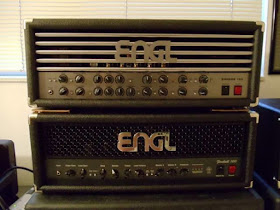Accusonus is one of the most interesting realities in music production software: they try to differentiate themselves from the other software houses by creating new tools to craft a sound, instead of proposing their version of something that was already there by decades.
Here's a chat about their vision of the music productin software:
GuitarNerdingBlog: Hello and welcome to Guitar Nerding Blog! Can you give us some details on how Accusonus was born?
Accusonus: Thanks for having us and congrats for your blog! Accusonus was founded back in 2012, from Elias Kokkinis and myself. Previously we were both working in the academia, doing research in audio signal processing. However, our dream was always to use our research background in order to build innovative products that will revolutionarize the pro-audio workflow. At the time, we were amateur musicians/sound engineers ourselves and I remember us having long discussions on how much we felt that the pro-audio industry was stagnated compared to other industries. We have more processing power in our pockets than the computers of the best professional recording studio in the 90s had: shouldn't we use this power to build something new? I guess that accusonus is our answer to this observation.
GNB: Do you think the Midi/samples world has reached a level of realism good enough or are we still going to have to rely on acoustic drums for long? Or is there a third way?
A: I think that drum samples are already very realistic. Some people might argue that they can be compared to a good drummer. My guess is that even if these people are right, the producer will have to spend countless hours on programming in order to give them a human touch. And even if she/he achieves the perfect result, there's still the problem that everyone uses the same libraries making every production sound the same. So my tip is use drum samples for your quick demos, but get a real drummer if you want to create great music or have fun with your band! Don't underestimate the human element in music. Music is all about emotions and despite the progress of AI, the computers don't have emotions now or in the foreseeable future. At the end of the rehearsal, you cannot grab a beer with your computer, can you?
GNB: What is the concept behind an Accusonus plugin usually like? And what about its design?
A: Our internal rule is that every accusonus product should do something that no existing product does. We are not interested in doing me-too products, simply because we find them boring. As for the design of our plugins: it's an iterative process, where we try to improve the user experience of our customers giving them the means to do their job easier and faster.
GNB: What is your opinion about the world of home recording and professional recording of today?
A: In the last decade, the home recording studio has been seriously upgraded since there's access to cheaper and better hardware and software. However, I think that there will be always a need for professional studios (at least for some people) for (i) the acoustics of the recording space and (ii) the need for the professional process. Think it this way: I can definitely do my job from home but I go everyday to the office to meet my colleagues and co-operate with them in a professional environment. Sometimes the professional studio is needed, because it's the office of musicians/engineers.
GNB: What is the philosophy behind your software?
A: In accusonus, we build Artificial Intelligence tools (drumatom is one of them)! But we want our AI to improve the workflow of musicians/engineers and not to replace them. Let's face it: the best element in music is fun and we want to keep it this way. So we want to use novel technology to revolutionarize the pro-audio industry without taking the fun element out of the music making process!
GNB: What are your career highlights as a software house?
A: We are only 3.5 years old, so my answer is that hopefully our career highlights are not here yet! That being said, whenever a professional around the world send us an email/tweet/facebook post that our software has saved her/his mix, we feel we have a new career highlight.
GNB: How do you think the future of mix engineering will be? Will it be still for years a continuous modeling of old hardware or do you think someday the concept itself of recording and amplifying will change, along with the tastes of musicians?
A: We have a very strong and clear vision for the future of the pro-audio industry and we are working to make it true. I cannot say much at this time, but right now 50% of our team is working in crazy research projects and you should expect to see the results in the next months/years!
GNB: Do you have any tip or suggestion on how to use your plugins? Or some setting you prefer?
A: My only general guidelines are: (1) experiment with our tools as much as you can and (2) trust your ears. For specific tips/sugested workflows, I would encourage everyone to subscribe to our newsletter:
http://accusonus.com/company/newsletter and youtube channel
Become fan of this blog on Facebook! Share it and contact us to collaborate!!








